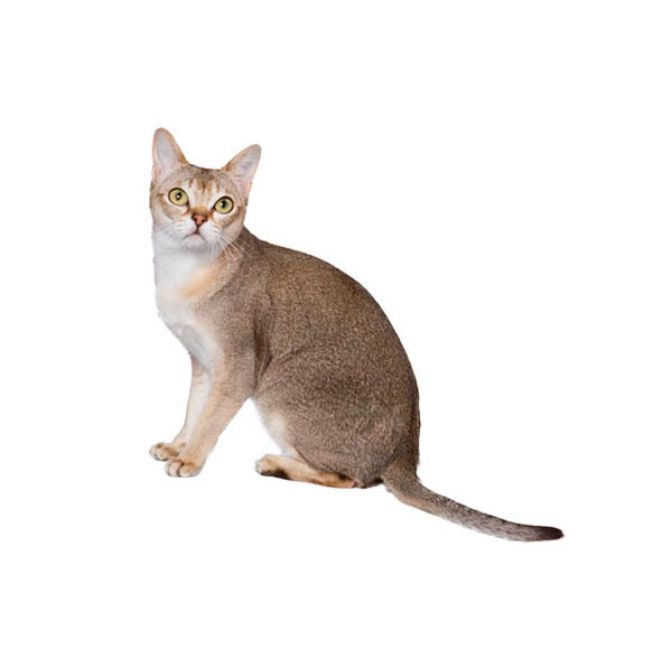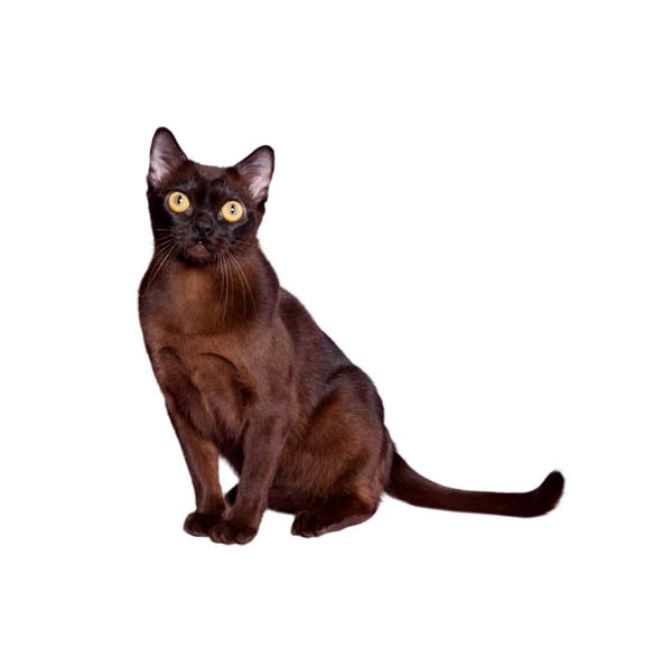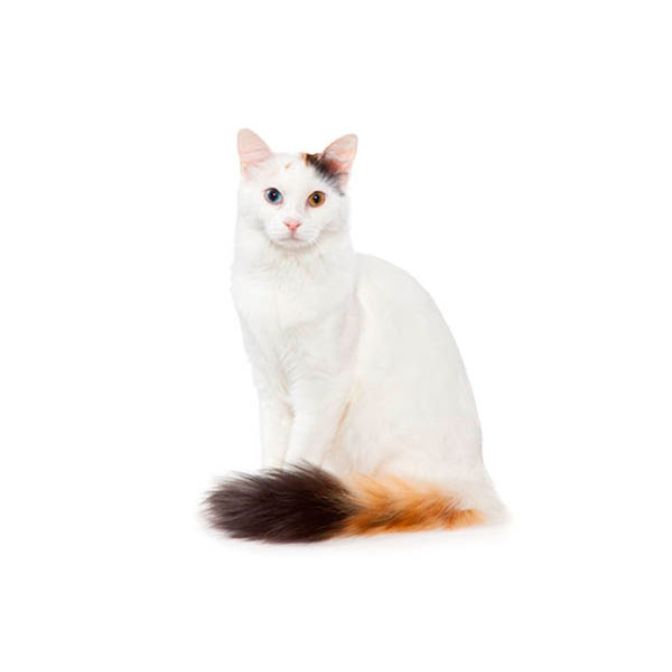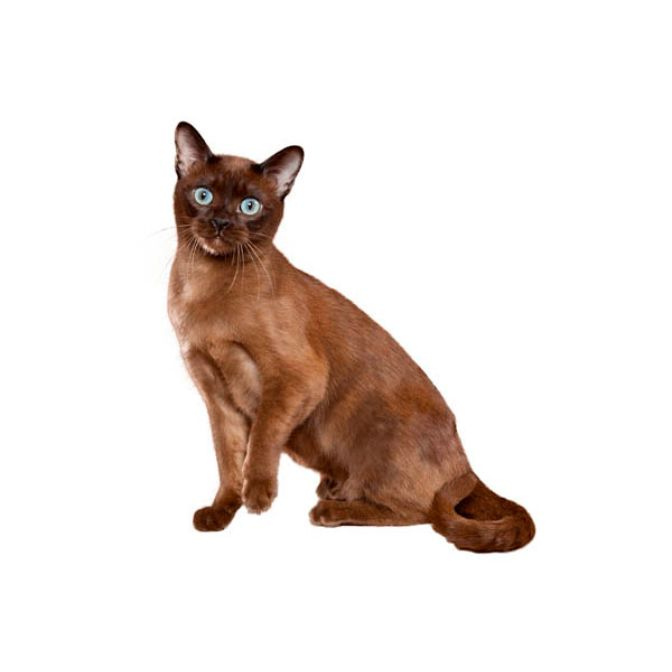Singapura
In looks the Singapura resembles the Abyssinian but is a much smaller cat. The head is rounded with a definite whisker break and a medium short broad muzzle with a blunt nose.
Small
Short
High
Singapuras are surprisingly heavy for their size, the females weigh about 4Kg and the males 6Kg.
Sepia
Like most of the foreign and oriental breeds of cat the Singapura is very affectionate and friendly but unlike their foreign and oriental counterparts they have very quiet voices and are more reserved. Singapuras love human company, and they are content to sit on their owner’s knee or shoulder. They seem to prefer to be above the ground and will often find a position that will give them a good view such as the top of bookshelves, wardrobes etc. They love warmth and make ideal housecats as they have no interest in going outside in the cold. They are active and lively and tend never to leave kitten hood throughout their lives, always being willing to play. They learn quickly and are inquisitive and mischievous.
In looks the Singapura resembles the Abyssinian but is a much smaller cat. The head is rounded with a definite whisker break and a medium short broad muzzle with a blunt nose. The profile shows a rounded skull with a slight stop below eye level and a straight line from nose to a well-defined chin. The ears are large and taper from a wide base to a slightly pointed tip. They are deeply cupped. The eyes are large and almond shaped slightly slanted and held wide open. The eyes are set at least one eye width apart. The colour can be hazel, green or yellow. Although these are small cats the body is stocky and muscular. The body and legs form a square. The legs are well-muscled and taper to small oval feet. The tail is slender with a blunt tip and should reach just short of the shoulder when brought along the side.
11 to 15 years
Shaded coat, darker across the back, tail and legs, paler on the face, chest and belly.
Singapuras, with their short, close lying coat do not require a lot of grooming and as is typical of many of the Shorthair breeds of cat they can look after their own coat very well with their own grooming. However, they will enjoy brushing with a soft brush and the attention that comes with it.
Singapuras are a tough, sturdy breed of cat perhaps because of their roots in Singapore’s gutters and docks and they don’t have any specific health problems. They do need regular vaccination and worming like all breeds of cat. Once the cat reaches about eight years of age your vet may recommend an annual health check along with the annual vaccinations and this may include teeth cleaning and blood tests to check for liver and kidney function.
As the Singapura is an active cat it will require about 70 Kcals per kg of bodyweight per day but these cats rarely overeat, and you cat will let you know how much it requires daily.
As the name suggests this breed of cat originates from Singapore where it was considered to be the ‘drain cat’ because of its habit of sleeping in drains and living in the gutters. This is also the reason given for the cat’s small stature and the Singapura is the world’s smallest breed of cat. The breed is thought to have existed for about three hundred years and is descended from cats from all over the world that arrived in Singapore on ships and bred with the local feral cats. The authorities considered them to be vermin and periodically culled the population. In 1974 the cull was so widespread that only three cats of the Singapura type survived and these cats were exported to America along with a fourth found in 1980 and from these four cats the recognised breed was founded. The first Singapura was imported into Britain in 1989 and they are now rapidly increasing in popularity as show cats and pets.
The Singapura originated from small brown cats with ticked coats known as “drain cats” because they lived in Singapore’s storm drains. These cats fought for their share of fish on the Malaysian island’s shipping docks. Singapura is the Malaysian word for the Singapore, which means “lion city” and explains why the breed is known as “little lions of love.”



